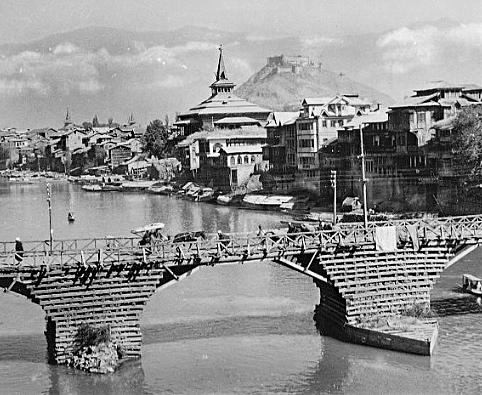
3 minute read
SRINAGAR (today Jammu & Kashmir
Srinagar
The small trinket boxes usually made in Kashmir consisted of decorated papier mache.
Advertisement
In this case, the foundation for the box was crafted from a light weight soft wood such as Poplar, Deodar, Fir, Pine which all grow in Kashmir. In general, softwoods are non-porous woods because they lack vessels. They consist of tracheid’s and wood rays but lack vessels. This allows softwoods to absorb adhesives quickly, resulting in a better finish. The base material is therefore ideal for box making as it is easily worked and more robust that papier mache but it has a plain appearance crying out for surface decoration. In this case, the wood has been lacquered in the Japanese style by first applying a fine cloth to the surface with adhesive in order to impart a good ‘key’ to which the lacquer can adhere. Once dry, the lacquer has been meticulously decorated with many colors. It was then overcoated with clear lacquer before final gilded details were applied). Jubbar Khan & Sons had the best craftsmen working for them and even to this day, their products stand as testimony to the fine, painstaking craftsmanship of its

workers, many of whom were Chinese. This accounts for the frequent (and confusing) presence of Chinese motifs such as dragons and Chinese characters on carved woodwork, though less so in the lacquered objects. The labels of Jubbar Khan and other craft shops in Srinagar indicated they they were located at the ‘3rd bridge’. There are many bridges crossing the Jhelum River which winds its way through the city. One should not imagine that the so-called 3rd bridge is like the Rialto bridge in Florence with many shops built on it. We can see from photos taken c. 1900 that the buildings were located on the banks close to the bridge. There were bustling bazars and shops where Jubbar Khan’s outlet was based.

Oddly enough, there were shops on the 4th Bridge but Jubbar Khan’s labels state his proximity to the 3rd Bridge.

Wood carving in Kashmir is a craft dating back to the Moghal empire. The wood of choice for Kashmiri wood carving is walnut (juglans nigra). Not only does this tree variety produce a highly prized dark hardwood but it also delivers regular crops of nutritious nuts. Being a hardwood, it allows precise and detailed carving and takes a fine polish when the work is complete. There are three types of carving. The first is rather flat and consists of little more than engraved outlines. The second is more three dimensional but still flat enough th resist chipping or upending a glass resting on its surface. The third is the most complex and allows the carver to express maximum virtuosity. It is highly undercut to the point where some elements of the design seem to take flight and soar about the structural surface of the wood.
The box illustrated here demonstrates this on the top whereas the sides and interior make use of the second type. It still bears the label of Habib Joo & Sons and depicts a spray of iris flowers which are so realistic they seem to be just resting on the surface of the box.

The interior of this box depicts the leaves of the famous Chinar trees (a type of maple) much loved by Kashmiris and frequently appearing in their art. British troops were stationed in Kashmir following the independence of India in 1947 and the troubled partition resulting in the state of Pakistan. The British officers often commissioned trinket boxes to take home to England, as in this case.



Srinagar carvers - Photo taken in 1948.
Kashmir borders with China/Tibet and Chinese influence often appears in the designs. Boxes with dragons and Chinese characters are often mistaken for Chinese origin rather than Kashmiri.
Contemporary display of hand carved products in Srinagar taken from a promotional youtube video.











